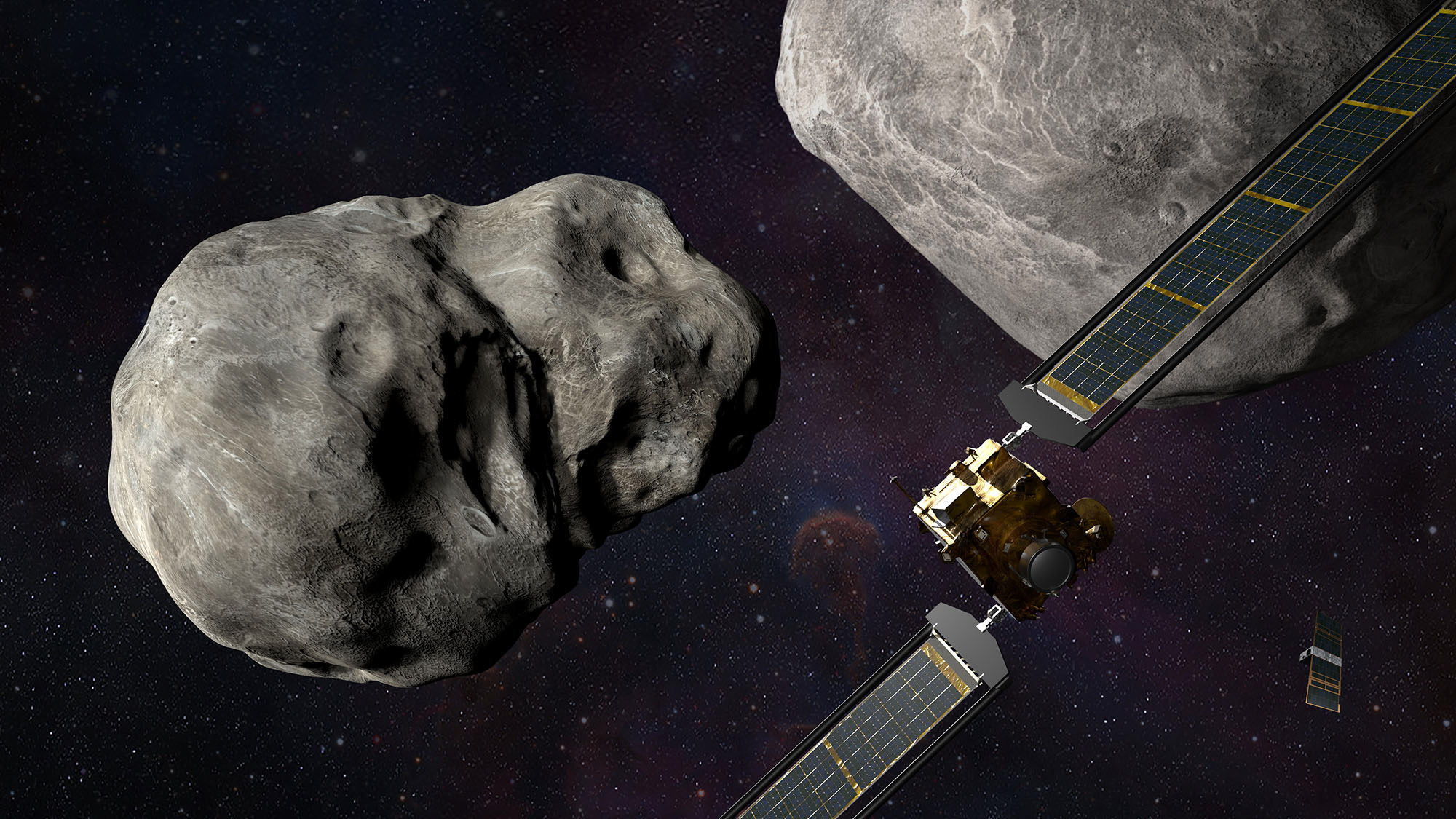What’s in an asteroid
Astronomers looking to prevent asteroids from hitting us have a new tool that reveals their interior structure.

MIT researchers have developed a way to map an asteroid’s interior structure, or density distribution, by analyzing how the asteroid’s spin changes as it makes a close encounter with more massive objects like Earth. The technique could improve the aim of future missions to deflect an asteroid headed for us, as demonstrated in NASA’s Double Asteroid Redirection Test in September.
Knowing what’s inside an asteroid could help scientists plan the most effective defense. “If you know the density distribution of the asteroid, you could hit it at just the right spot so it actually moves away,” says Jack Dinsmore ’22, coauthor of the paper on this work with Julien de Wit, PhD ’14, an assistant professor in the Department of Earth, Atmospheric, and Planetary Sciences.
“It’s similar to how you can tell the difference between a raw and boiled egg,” de Wit says. “If you spin the egg, the egg responds and spins differently depending on its interior properties. The same goes for an asteroid during a close encounter.”
The team is eager to apply the method to Apophis, a near-Earth asteroid that could pose a significant hazard if it were to make impact. Scientists have ruled out the likelihood of a collision for at least a century, but beyond that, their forecasts grow fuzzy.
Keep Reading
Most Popular
Large language models can do jaw-dropping things. But nobody knows exactly why.
And that's a problem. Figuring it out is one of the biggest scientific puzzles of our time and a crucial step towards controlling more powerful future models.
How scientists traced a mysterious covid case back to six toilets
When wastewater surveillance turns into a hunt for a single infected individual, the ethics get tricky.
The problem with plug-in hybrids? Their drivers.
Plug-in hybrids are often sold as a transition to EVs, but new data from Europe shows we’re still underestimating the emissions they produce.
Stay connected
Get the latest updates from
MIT Technology Review
Discover special offers, top stories, upcoming events, and more.